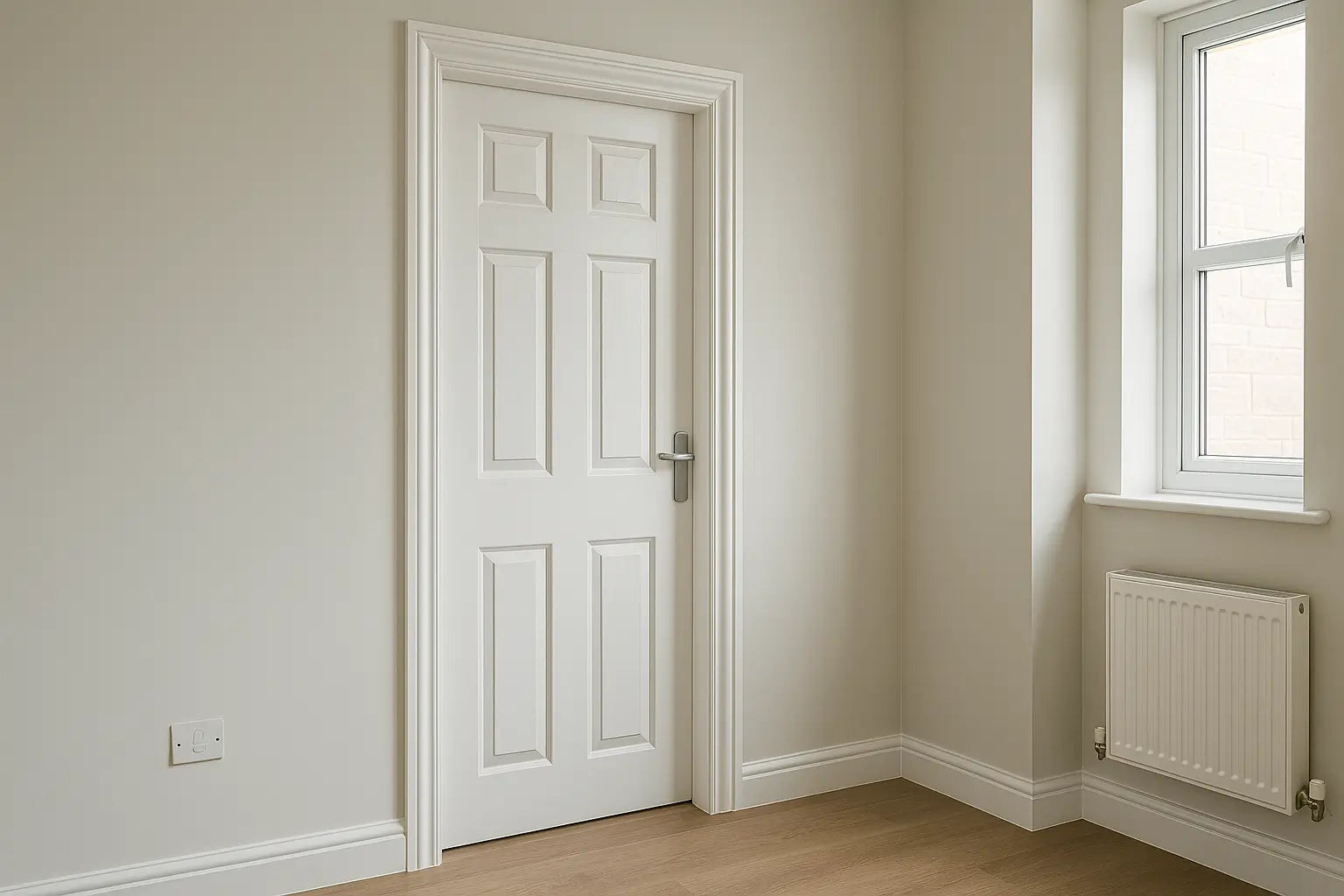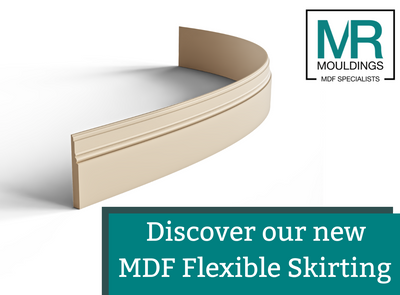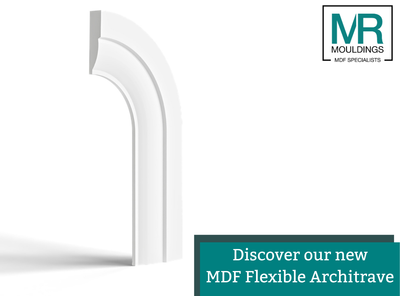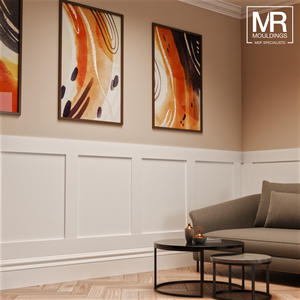
How to Frame Doors and Windows Like a Pro
Architraves are one of those finishing touches that most people overlook - yet they make a huge difference to the look and feel of your home. A well-fitted architrave frames doors and windows beautifully, covering joins and adding structure to your interior design.
In this guide, we’ll explain what architraves are, why they matter, and how to choose, measure, and fit them like a professional joiner. Whether you’re updating a period property or giving a new build a stylish finish, the right architraves can elevate every room.
What Are Architraves?
An architrave is a moulded trim fitted around doors or windows to conceal the gap between the frame and the wall. While they serve a practical purpose, they’re also a key design feature - adding definition, symmetry, and visual polish to your space.
Architraves come in a variety of materials and profiles, with options to suit both traditional and modern interiors. MDF has become the most popular choice in the UK thanks to its smooth finish, affordability, and durability.
Why Are Architraves Important?
1. They conceal gaps
Door and window frames naturally leave small gaps where they meet plastered walls. Architraves neatly cover these, giving a clean, professional finish.
2. They protect edges
Architraves help prevent knocks and damage from foot traffic, furniture, and everyday wear.
3. They complete the design
They bring balance to interiors, complementing skirting boards and wall panelling to tie the whole look together.
Choosing the Right Architrave Profile
The profile of your architrave determines its overall style and how it complements your home. We offer a wide range of MDF profiles to match both modern and period designs.
Popular profiles include:
-
Torus: A classic curved profile that pairs perfectly with traditional skirting.
-
Ogee: Elegant and decorative, ideal for Victorian and Georgian interiors.
-
Chamfered: A sharp, angled edge that gives a contemporary finish.
-
Square Edge: Sleek and minimalist, great for modern homes.
-
Bullnose: Smooth and simple, versatile across styles.
Pro tip: Match your architrave profile with your skirting boards for visual consistency, or choose contrasting profiles for a more bespoke, design-led look.
What Material Is Best for Architraves?
While timber and hardwood are traditional, MDF is now the go-to material for most homeowners and tradespeople.
MDF Architraves offer several advantages:
-
Smooth surface: Ideal for painting and easy to finish.
-
Consistency: No knots, warping, or imperfections.
-
Cost-effective: Great quality without the premium price.
-
Primed and ready: MR Mouldings’ MDF architraves come pre-primed for immediate installation and painting.
-
Moisture-resistant options: Perfect for bathrooms, kitchens, and humid spaces.
How to Measure for Architraves
Before cutting or fitting, accurate measurement is essential.
-
Measure the height of each door or window frame from the floor to the top edge.
-
Add overlap: Architraves typically extend 5–10 mm beyond the frame to cover gaps and provide a neat edge.
-
Mark clearly: Use a pencil and square for crisp, straight guide lines.
-
Allow for joints: Each corner will require a mitre cut at 45°, so account for this when measuring lengths.
If you’re replacing existing architraves, use one of the old pieces as a template to maintain consistent sizing.
How to Cut Architraves Like a Professional
1. External corners
Most doorways have external corners, which should be joined with a mitre cut:
-
Set your mitre saw to 45°.
-
Cut each adjoining piece in opposite directions.
-
Check the joint by test-fitting before fixing permanently.
2. Internal corners
Less common for doors but typical for window frames - use the same mitre technique, or a coping saw for precise internal joins.
3. Cutting tips
-
Always cut slightly long and trim down as needed.
-
Keep saw blades sharp for clean edges.
-
Mark each piece to avoid confusion when fitting multiple doorways.
How to Fit Architraves
Step 1: Prepare the Surface
Ensure the wall around your frame is clean and smooth. Remove any old adhesive, nails, or damaged plaster.
Step 2: Dry-Fit
Before glueing or nailing, position all three architrave pieces (two vertical legs and one horizontal head) to confirm your measurements and mitre joints are perfect.
Step 3: Fix in Place
Use a high-strength adhesive or a combination of adhesive and nails. Start with the top horizontal piece, then fix each side vertically. Check alignment with a spirit level as you go.
Step 4: Fill and Finish
Once fitted, fill any small nail holes or gaps with caulk. Lightly sand the joints, then paint for a flawless finish.
If you’re unsure about painting order, see Should You Paint Skirting Boards Before or After Fitting? The same principle applies to architraves.
Coordinating Architraves with Skirting Boards
Matching your architraves and skirting boards helps create a cohesive, polished look throughout your home.
-
Modern interiors: Pair square-edge or chamfered profiles for clean simplicity.
-
Traditional spaces: Use ogee or torus profiles for a period feel.
-
Statement designs: Mix contrasting profiles or paint colours to highlight doorways as design features.
Our’ collections are designed so every skirting board profile has a matching architrave for seamless coordination.
Troubleshooting Common Issues
Gaps between joints:
-
Ensure mitre angles are accurate; re-cut if needed.
-
Fill small gaps with decorator’s caulk before painting.
Uneven walls:
-
Use extra adhesive or packers to ensure a flush fit.
-
See How to Fit Skirting Boards on Uneven Walls for tips that apply equally to architraves.
Paint cracking at joints:
-
Always allow caulk or filler to dry fully before painting.
-
Apply thin coats and avoid over-brushing corners.
Conclusion
Architraves may be a small detail, but they make a big difference. Professionally fitted, they frame your doors and windows, elevate your décor, and give your home a polished, finished appearance.
For perfectly machined profiles that are easy to fit and ready to paint, explore our full range of MDF Architraves. Choose from classic ogee and torus styles to contemporary square-edge and chamfered designs - all made in the UK and built to last.




